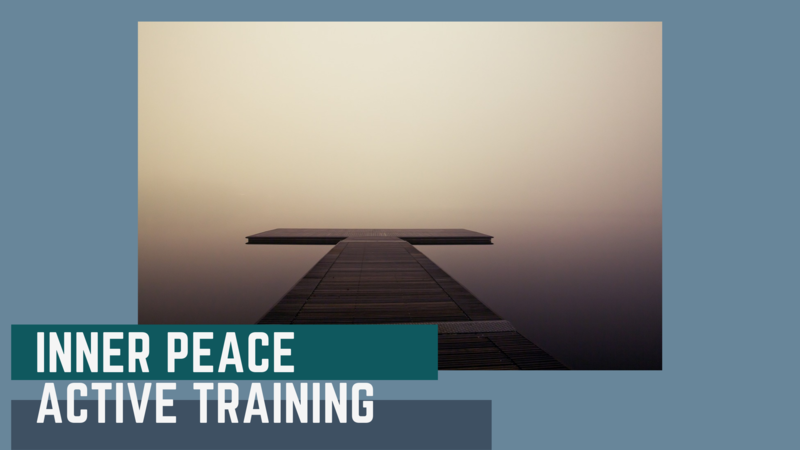28.3 Pacify stress – silence thoughts and body

3. Strategy: Inner peace, active training
Here we are actively training the brain to slow down to speed. When the brain works slower, everything goes better. These methods require that you have some patience with yourself. They are also a way to test if you are stressed. If you find it challenging to keep watching the following videos, you are either stressed or your thoughts are elsewhere.
Intro Inner Peace (7 Minutes)
Training inner peace is for you who want to spend ½ to 1 hour several times a week.
- If you have symptoms of stress, daily exercise is perfect.
- If you have a severe diagnosis, there are people around the world who spend up to 3 hours daily to keep the symptoms away.
If you have the choice between severe symptoms or prioritizing time each day to practice calm, then the decision may not be that difficult. We’re just not used to thinking that way. If you are diligent, you will see improvements within weeks of daily exercise or 2-3 months of training 1-2 times a week.
Yoga and meditation are great exercises for calming. So, if you have a quiet spot where you can exercise, there is plenty of material to find on YouTube.
I would like to introduce you to ways of practicing tranquility: Yoga, Breathing, Qi Gong and Hypnosis. Qi Gong is the gentlest form of training I know. It benefits joints and agility, and then it creates RO. It is an ancient Chinese practice and is also called “moving meditation.” Every family in China had its own practices that were inherited for thousands of years.
- Slow breathing and yoga: Jacob Kidney is a brand new instructor of Yoga and had felt in his own body how stress added up to disease. Yoga and breathing are two very good ways to bring down your stress.
- Qi Gong: Kirsten Skov has 30 years of teaching practice and has chosen these Qi Gong exercises from the ones that people had the easiest time practicing. She often has on her team in Denmark people with chronic illnesses, and they all get better. If you find it interesting, you can buy it in a stand alone course.
- Relaxation audio files calmly teach your body and brain to work at a slower pace and with a more accepting mindset. Hypnotherapist Kimi Sand uses hypnosis recordings like these to help people become free of many different issues. Feel free to contact info@kimisand.dk to get paid therapies or your own tailor made relaxation file.
You can now use these files as often as you can and preferably daily until the end of the course.

Relaxing audio files (approximately 20 minutes each)
Always write down your symptoms on a scale on 0-10 so you can see the difference. The level you reach after is the next step possible to reach for you for a longer and longer period of time.
Let go of tomorrows worries:
No worries (click and listen with closed eyes)Audio: Kimi Sand – No worries 21.mp3
Get a healthy body:
Relax organs and build self-confidence (click and listen with closed eyes)
Sleep hypnosis for those of you with sleep problems (20 minutes)
Good sleep is the start of a good day.
But sleep quality is the result of the previous day’s feelings and worries about tomorrow. So you can get a better quality of sleep by neutralizing the thoughts and feelings of today.
Relaxation hypnosis prepared by hypnotist Kimi Sand (click and listen with closed eyes). Listen as often as you can if you have even the least problem with your sleep.
Did you like Kimis relaxations file?. Get one that is tailored for you by using her service and dig into one of your problems.

Qi Gong
Introduction (5 minutes)
For you that have to sit (2 minutes)
Qi gong training (50 minutes)
Below a Qi Gong traning with danish speak. Skip it or just follow her movements 🙂

Breathe as if you’re at rest (4 minutes)
Here a breathing exercises with Jacob Kidney that can pull you out of stress and into a calm state.
- Fast superficial breathing with the shoulders and upper part of the chest go together with fight and flight
- Slow deep breathing with your abdomen goes together with a calm state.
- No or minimal movement of abdomen or breast might point to you being in freeze
Put a hand on your stomach and a hand on your chest. Do you use 1 or 2 or 3 from the above list?

“Box breathing”
The body likes to be tricked into a calm state. So if you are worried, the nearest shortcut is to breathe as if you are relaxed – so breath slower and deeper than you naturally would in this state of mind.
An easy way is to count to four as you breathe deeply.
- Count to four while taking a deap breath
- Count to four while holding your breath
- Count to four as you exhale
- Count to four before starting over.
Do this as often as possible when you notice your stress signs. If you get the slightest dizziness, then stop and make the breathing exercise a little less intense a second time.
If you generally have a superficial (tiny) breath in the upper chest, it means that you “stand behind a tree because you have spotted a sabertooth tiger.” You breathe as little as you can so as not to draw attention to yourself. Your body is alert, and you are considering whether to fight, run, or go into shock to save yourself from danger.
You probably have one or more trauma that keeps your breathing locked most of the day.
This link is how soldiers avoid stress. There is a nice little animation with a blue dot to help you get the right speed with your breath.

